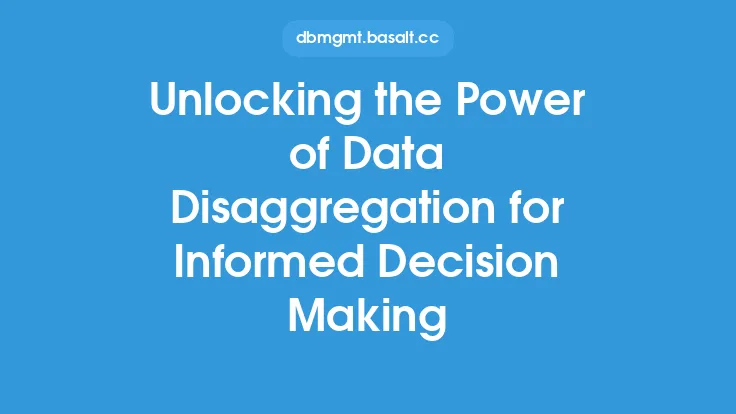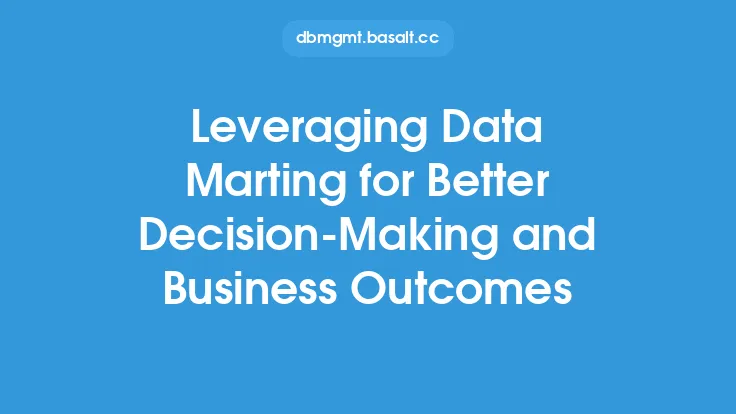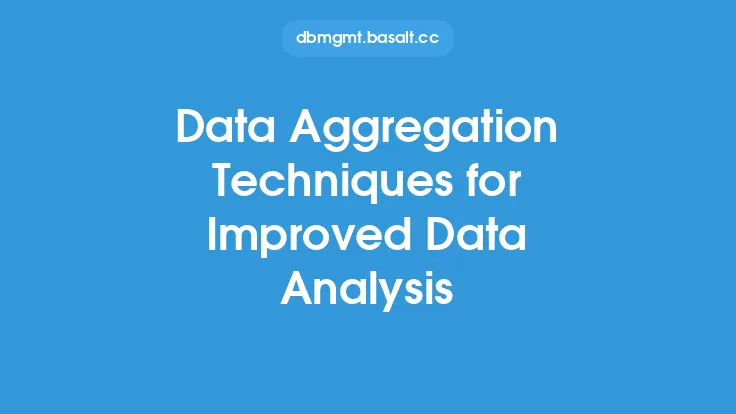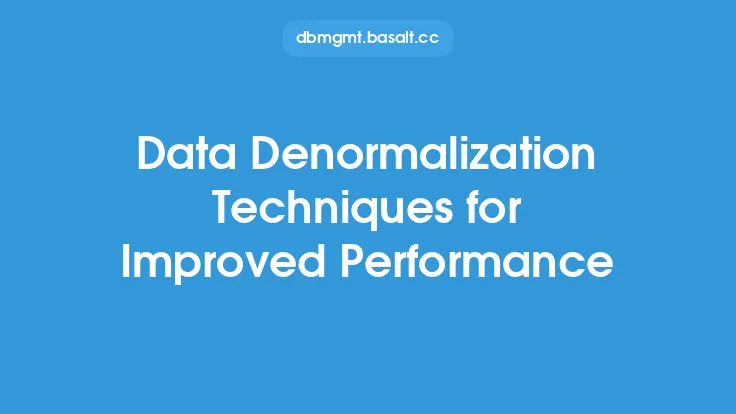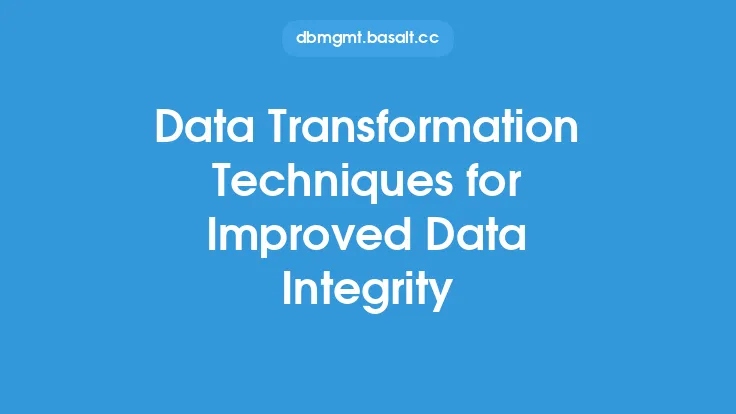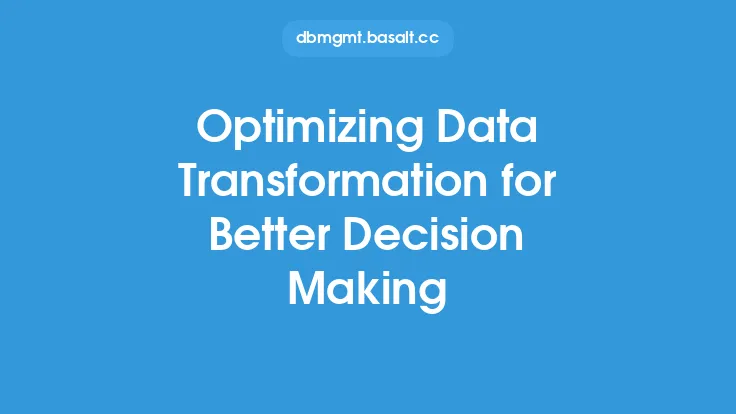Data disaggregation is a crucial process in data analysis that involves breaking down complex data into smaller, more manageable components. This technique is essential for uncovering hidden patterns, trends, and insights that may not be immediately apparent from aggregated data. By applying data disaggregation techniques, organizations can gain a deeper understanding of their data, make more informed decisions, and drive business success.
Introduction to Data Disaggregation Techniques
Data disaggregation techniques are designed to help organizations extract valuable insights from their data. These techniques involve breaking down data into smaller units, such as individual transactions, customer interactions, or product sales. By analyzing these smaller units, organizations can identify patterns and trends that may not be visible at the aggregated level. Some common data disaggregation techniques include data drilling, data slicing, and data dicing. Data drilling involves analyzing data at a detailed level, while data slicing and dicing involve breaking down data into smaller subsets based on specific criteria.
Types of Data Disaggregation
There are several types of data disaggregation, each with its own unique characteristics and applications. Geographical disaggregation involves breaking down data by geographic location, such as country, region, or city. This type of disaggregation is useful for organizations that operate in multiple locations and need to understand regional trends and patterns. Product-based disaggregation involves breaking down data by product or service, allowing organizations to analyze sales trends, customer preferences, and market demand. Time-based disaggregation involves breaking down data by time period, such as daily, weekly, or monthly, enabling organizations to analyze trends and patterns over time.
Benefits of Data Disaggregation
Data disaggregation offers numerous benefits for organizations, including improved decision making, enhanced customer insights, and increased operational efficiency. By analyzing data at a detailed level, organizations can identify areas of improvement, optimize business processes, and make data-driven decisions. Data disaggregation also enables organizations to develop targeted marketing campaigns, improve customer engagement, and enhance overall customer experience. Additionally, data disaggregation can help organizations identify new business opportunities, mitigate risks, and stay ahead of the competition.
Data Disaggregation Tools and Technologies
A range of tools and technologies are available to support data disaggregation, including data analytics software, business intelligence platforms, and data visualization tools. These tools enable organizations to easily break down complex data into smaller components, analyze data at a detailed level, and visualize insights in a clear and meaningful way. Some popular data disaggregation tools include spreadsheet software, such as Microsoft Excel, and data analytics platforms, such as Tableau and Power BI. These tools provide a range of features and functionalities, including data filtering, data grouping, and data visualization, to support data disaggregation and analysis.
Best Practices for Data Disaggregation
To get the most out of data disaggregation, organizations should follow best practices, such as defining clear goals and objectives, selecting the right tools and technologies, and ensuring data quality and accuracy. It is also essential to have a clear understanding of the data and the business context in which it will be used. Additionally, organizations should consider the level of granularity required for their analysis, as well as the potential risks and limitations associated with data disaggregation. By following these best practices, organizations can ensure that their data disaggregation efforts are effective, efficient, and yield valuable insights that drive business success.
Common Challenges and Limitations
While data disaggregation offers numerous benefits, it also presents several challenges and limitations. One of the main challenges is ensuring data quality and accuracy, as poor data quality can lead to incorrect insights and decisions. Another challenge is managing the complexity of large datasets, which can be time-consuming and resource-intensive. Additionally, data disaggregation can also raise concerns around data privacy and security, particularly when dealing with sensitive or confidential information. To overcome these challenges, organizations should invest in data quality initiatives, develop robust data management processes, and ensure that they have the necessary skills and expertise to support data disaggregation efforts.
Future of Data Disaggregation
The future of data disaggregation is exciting and rapidly evolving. Advances in technologies, such as artificial intelligence and machine learning, are enabling organizations to analyze larger and more complex datasets than ever before. Additionally, the increasing use of cloud-based data platforms and big data analytics is making it easier for organizations to store, process, and analyze large amounts of data. As data continues to grow in volume, variety, and velocity, the importance of data disaggregation will only continue to increase. Organizations that invest in data disaggregation techniques, tools, and technologies will be well-positioned to unlock the full potential of their data and drive business success in the years to come.
Conclusion
Data disaggregation is a powerful technique for unlocking hidden insights and driving business success. By breaking down complex data into smaller, more manageable components, organizations can gain a deeper understanding of their data, make more informed decisions, and drive business growth. While data disaggregation presents several challenges and limitations, the benefits far outweigh the costs. As data continues to play an increasingly important role in business decision making, the importance of data disaggregation will only continue to grow. By investing in data disaggregation techniques, tools, and technologies, organizations can stay ahead of the curve and unlock the full potential of their data.
